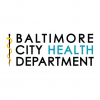Baltimore City Health Commissioner Supports City Council Legislation Prohibiting Tobacco Use At Playgrounds, Schoolyards & Athletic Facilities
Monday Jan 13th, 2014
FOR IMMEDIATE RELEASE
FOR IMMEDIATE RELEASE
Media Contact: Michael Schwartzberg, PIO
O: (443) 984-2623 C: (443) 462-7939 E: michael.schwartzberg@baltimorecity.gov
Baltimore City Health Commissioner Supports City Council Legislation Prohibiting Tobacco Use At Playgrounds, Schoolyards &Athletic Facilities |
BALTIMORE, MD (January 13, 2014) — The Baltimore City Health Commissioner is in support of legislation introduced at tonight’s City Council meeting which would prohibit use of tobacco products near playgrounds, schoolyards and athletic facilities.
“Areas such as playgrounds and schoolyards play an important role in providing safe spaces for physical activity and recreation and should be a safe haven from the deadly dangers of tobacco smoke,” said Dr. Oxiris Barbot, Baltimore City Commissioner of Health. “Designating playgrounds, schoolyards and athletic facilities as smoke-free in Baltimore City would help protect the health of the 75 percent of city residents who don’t smoke.”
Secondhand smoke exposure also exacerbates childhood asthma, a condition for which Baltimore City already has one of the highest prevalence rates in the nation. According to the most recent Centers for Disease Control and Prevention’s Youth Risk Behavior Survey (2007), 28 percent of high school students in Baltimore City report having been diagnosed with asthma, compared with 20 percent nationwide.
“Children are very impressionable. Playgrounds and schoolyards should be safe spaces for children to learn and practice healthy habits that will last a lifetime,” Dr. Barbot added. “The science is clear that nicotine addiction can take hold at very early years. The best way to reduce the number of smokers we have in the city is to ensure we limit the number of children who start smoking.”
Tobacco use is a major contributor to heart attacks, stroke, chronic lung disease and cancer and is one of the most preventable causes of death and disease for men and women. Cardiovascular disease (CVD) is the leading cause of death in Baltimore City, and smoking is one of the major risk factors for developing CVD.
Tobacco use is an issue that directly impacts several goals outlined in the city’s health policy agenda, Healthy Baltimore 2015.
Decrease the percent of adults who currently smoke by 20 percent.
- In 2011, nearly 25 percent of Baltimore City residents self-reported in a survey that they were a smoker. Baltimore City has consistently had a higher smoking prevalence than the state of Maryland.
Reduce the percent of teens who currently smoke by 20 percent.
- In 2007, nearly 12 percent of high school students reported they had smoked tobacco products at least once in the previous month. A 2010 study of tobacco use behaviors showed use of “any” tobacco product by youth under age 18 had increased nearly three percent between 2000 and 2010.
Decrease by 15 percent the rate of births to women who report smoking during pregnancy.
- Between 2009 and 2011, the rates of smoking during pregnancy increased, particularly among African American women, an increase of 20.5 percent.
Increasing the percent of adults getting the recommended level of physical activity by 20 percent.
- “We’ve made great strides on this goal, going from less than 30 percent in 2009 to almost 44 percent in 2011, and prohibiting smoking in these outdoor areas could help increase usage of these spaces for physical activity,” said Dr. Barbot.
“This legislation is especially timely as in 2014 we are recognizing the 50th anniversary of the Surgeon General’s report on smoking and health, released in 1964,” Dr. Barbot said. “In these last 50 years, the smoking prevalence among adults in the United States has been reduced by half. Unfortunately, tobacco use remains the leading preventable cause of disease, disability, and death in the United States. So while we’ve made some progress, we still have a long way to go.”
Several municipalities adjacent to Baltimore City, including Anne Arundel County, Baltimore County and Howard County, have similar restrictions in place or are considering such prohibitions.
